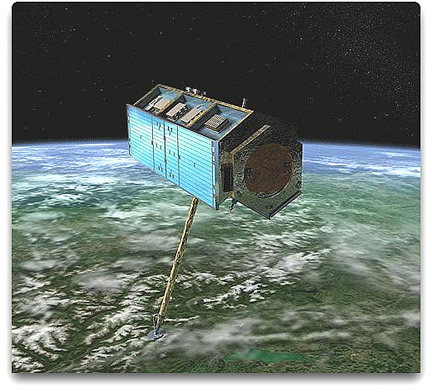'Along-track InSAR' is a new technique that uses high-resolution satellite imagery from a single observation for direct measurements of surface current fields. In spring and summer 2008, Romeiser and project partners at the German Aerospace Center (DLR) got their first opportunity to acquire experimental along-track InSAR images with the new German satellite TerraSAR-X over the Elbe River in Germany. Analyzing amplitudes and phases of the interferometric data and applying some theoretical corrections, Romeiser obtained a solution for the most likely line-of-sight surface current field at the time of each satellite overpass. The results were found to be consistent with a numerical Elbe River model of the German Federal Waterways Engineering and Research Institute (BAW), and with Romeiser's earlier theoretical predictions of the data quality to be expected from TerraSAR-X. A manuscript on this work was submitted to IEEE Transactions on Geoscience and Remote Sensing. Romeiser and his collaborators plan to acquire more TerraSAR-X along-track InSAR images and to develop and implement quasi-operational algorithms for satellite-based current measurements at CSTARS. The ONR grant will help fund further research on the technique's suitability for river applications.
Satnews Daily
December 31st, -0001
Rivers + Oceans + InSAR
Working closely with the University of Miami's Center for Southeastern Tropical Advanced Remote Sensing (CSTARS), Associate Professor of Applied Marine Physics, Dr. Roland Romeiser, has been awarded a $500,000 grant by the Office of Naval Research (ONR).
 The project, "Currents in Rivers Observed by Spaceborne Along-Track InSAR (CuRiOSATI)," marks the first ever use of this type of InSAR (interferometric synthetic aperture radar) satellite imagery to determine surface current fields in rivers and in the ocean. These measurements will be valuable in monitoring global river runoff, bathymetric changes in coastal waters, and the spreading of pollutants, as well as in basic research on turbulence characteristics in the open ocean and other promising applications.
The project, "Currents in Rivers Observed by Spaceborne Along-Track InSAR (CuRiOSATI)," marks the first ever use of this type of InSAR (interferometric synthetic aperture radar) satellite imagery to determine surface current fields in rivers and in the ocean. These measurements will be valuable in monitoring global river runoff, bathymetric changes in coastal waters, and the spreading of pollutants, as well as in basic research on turbulence characteristics in the open ocean and other promising applications.
'Along-track InSAR' is a new technique that uses high-resolution satellite imagery from a single observation for direct measurements of surface current fields. In spring and summer 2008, Romeiser and project partners at the German Aerospace Center (DLR) got their first opportunity to acquire experimental along-track InSAR images with the new German satellite TerraSAR-X over the Elbe River in Germany. Analyzing amplitudes and phases of the interferometric data and applying some theoretical corrections, Romeiser obtained a solution for the most likely line-of-sight surface current field at the time of each satellite overpass. The results were found to be consistent with a numerical Elbe River model of the German Federal Waterways Engineering and Research Institute (BAW), and with Romeiser's earlier theoretical predictions of the data quality to be expected from TerraSAR-X. A manuscript on this work was submitted to IEEE Transactions on Geoscience and Remote Sensing. Romeiser and his collaborators plan to acquire more TerraSAR-X along-track InSAR images and to develop and implement quasi-operational algorithms for satellite-based current measurements at CSTARS. The ONR grant will help fund further research on the technique's suitability for river applications.
'Along-track InSAR' is a new technique that uses high-resolution satellite imagery from a single observation for direct measurements of surface current fields. In spring and summer 2008, Romeiser and project partners at the German Aerospace Center (DLR) got their first opportunity to acquire experimental along-track InSAR images with the new German satellite TerraSAR-X over the Elbe River in Germany. Analyzing amplitudes and phases of the interferometric data and applying some theoretical corrections, Romeiser obtained a solution for the most likely line-of-sight surface current field at the time of each satellite overpass. The results were found to be consistent with a numerical Elbe River model of the German Federal Waterways Engineering and Research Institute (BAW), and with Romeiser's earlier theoretical predictions of the data quality to be expected from TerraSAR-X. A manuscript on this work was submitted to IEEE Transactions on Geoscience and Remote Sensing. Romeiser and his collaborators plan to acquire more TerraSAR-X along-track InSAR images and to develop and implement quasi-operational algorithms for satellite-based current measurements at CSTARS. The ONR grant will help fund further research on the technique's suitability for river applications.

